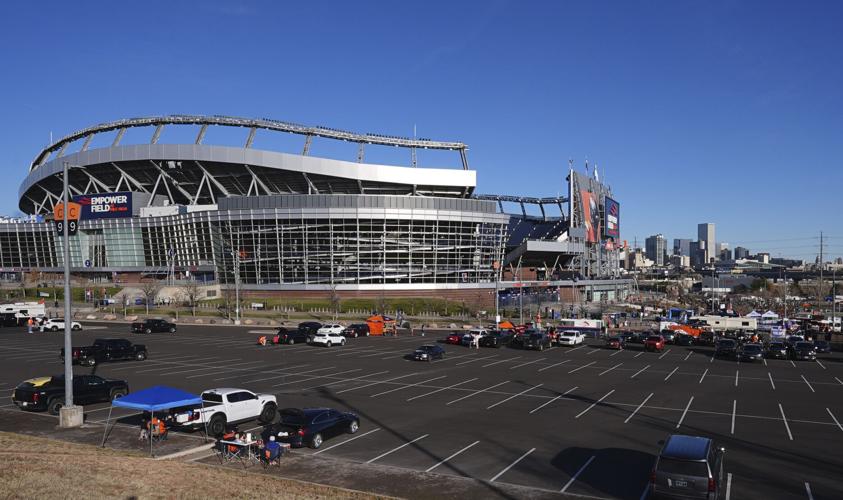The Denver Broncos, a team with a rich history in the National Football League, have long been an integral part of the sports culture in Colorado. Their home games at Empower Field at Mile High have been a staple for local fans, drawing thousands to the stadium every season to cheer on their beloved team. However, recent news has sparked excitement and curiosity among football fans and city planners alike: the possibility of a new stadium for the Broncos being built in Lone Tree, a suburban area south of downtown Denver. While still in the early stages of discussion, the potential move has already stirred debate, raised questions about the future of the team’s home field, and highlighted the city of Denver’s continuing evolution.
At the heart of the discussion is a desire to modernize the Broncos’ stadium facilities. Empower Field at Mile High, which opened in 2001, is no longer considered the cutting-edge facility it once was. Like many sports venues across the country, the stadium has undergone renovations over the years, but as the needs of modern sports teams and their fanbases continue to evolve, the idea of a new, state-of-the-art venue has gained traction. A new stadium could offer the Broncos and their fans the most up-to-date amenities, increased seating capacity, improved accessibility, and more revenue-generating opportunities, which are crucial in an increasingly competitive market for professional sports.
Lone Tree, a rapidly growing city located in Douglas County, has emerged as a potential location for this new stadium. Known for its affluent population, well-planned neighborhoods, and prime location just south of Denver, Lone Tree presents an appealing option for a new sports facility. Its proximity to major highways, such as Interstate 25, makes it accessible to fans from all over the Denver metro area and beyond. Additionally, the city is already home to several commercial developments, shopping centers, and residential communities, making it an attractive site for a large-scale project like a stadium. The decision to consider Lone Tree reflects the area’s potential to handle the demands of a high-profile venue while providing a convenient and attractive location for fans.
In the early stages, city authorities have been keen to emphasize that discussions are still in the conceptual phase. There is no definitive plan in place, and numerous factors need to be addressed before any groundbreaking takes place. For instance, the financial feasibility of the project is still under scrutiny. Building a new stadium is an expensive endeavor, often costing hundreds of millions, if not billions, of dollars. Financing such a project requires careful planning, potential public-private partnerships, and a clear understanding of the long-term economic impact on the surrounding area. City officials have indicated that they are exploring various funding options, including possible contributions from the Broncos organization, state and local governments, and private investors.
Another crucial consideration in the potential move is the fate of Empower Field at Mile High. The stadium, which was constructed at a cost of $400 million, is still relatively young in terms of lifespan. Its location, just a few miles west of downtown Denver, is iconic and well-established. As such, there are many who believe the Broncos should remain at Mile High, either by renovating the current facility or making upgrades to the existing structure. Supporters of this view argue that Mile High holds historic significance for the team and the city. The stadium’s design, which features a horseshoe-shaped seating arrangement and stunning views of the Rocky Mountains, has become synonymous with the Broncos’ brand. For many fans, moving to a new stadium would not only be a logistical challenge but also an emotional one, as they associate Mile High with decades of memories, both good and bad, that have shaped the team’s legacy.
Despite these concerns, the potential benefits of building a new stadium in Lone Tree are compelling. One of the biggest advantages is the ability to design a venue specifically for the needs of the modern sports fan. The trends in stadium design over the past decade have shifted toward creating multi-purpose venues that are not only suitable for football games but can also host a wide variety of events, such as concerts, festivals, and other large-scale gatherings. A new stadium in Lone Tree could incorporate cutting-edge technologies, such as interactive seating, mobile app integrations, and high-definition screens throughout the venue. These features would enhance the fan experience and allow the Broncos to stay competitive with other teams across the league that have already upgraded their home stadiums.
Additionally, a new stadium would provide opportunities for increased revenue generation. Modern sports venues often feature luxury suites, high-end dining options, and corporate sponsorship deals that can bring in substantial amounts of money. A new stadium could allow the Broncos organization to capitalize on these revenue streams, which are critical for maintaining the team’s financial health and securing the long-term success of the franchise. It could also have a positive impact on the surrounding community, as new developments often spur economic growth in the areas around them. The creation of jobs, increased tourism, and an influx of new businesses could transform Lone Tree into an even more vibrant and bustling area, benefiting local residents and businesses.
While the idea of a new stadium in Lone Tree may be exciting for some, it also raises concerns among certain segments of the population. One of the primary concerns is the potential disruption to the surrounding community. A large stadium project would undoubtedly have an impact on traffic patterns, local infrastructure, and the environment. Traffic congestion on game days could become a significant issue, especially considering the proximity of Lone Tree to other populous areas. Some residents and city planners have expressed concerns about how the project would affect the overall flow of the city, particularly during peak traffic times. Planning for adequate transportation infrastructure, including parking and public transit options, will be critical to ensuring that the project does not exacerbate these challenges.
Environmental impact is another key consideration. Stadiums are massive structures that consume vast amounts of energy and resources. City authorities would need to work closely with environmental experts to ensure that the stadium is built with sustainability in mind. This could include implementing energy-efficient technologies, minimizing waste, and incorporating green building practices. Additionally, the development of a new stadium in Lone Tree could result in the displacement of existing businesses or green spaces, which could be met with resistance from the local community. Balancing the need for economic growth with environmental preservation will be a critical aspect of the planning process.
In addition to logistical and environmental concerns, there are also political implications to consider. Building a new stadium requires coordination between various levels of government, including local, state, and potentially federal entities. Public support for such a large-scale project is essential, and city officials will need to engage with residents and local organizations to ensure that the project aligns with the broader goals of the community. Community outreach and involvement will play a key role in determining whether a new stadium in Lone Tree becomes a reality.
As the idea of a new stadium continues to evolve, it will undoubtedly spark further discussions and debates. Fans, city planners, and the Broncos organization will have to carefully weigh the pros and cons of such a significant move. Whether the team remains at Empower Field at Mile High or relocates to a new venue in Lone Tree, one thing is certain: the future of the Denver Broncos and their stadium will continue to shape the sports landscape in Colorado for years to come. The decision on where the Broncos will play their home games in the future will be a pivotal moment in the team’s history, and the outcome will have lasting implications for the team, the fans, and the city of Denver itself.



